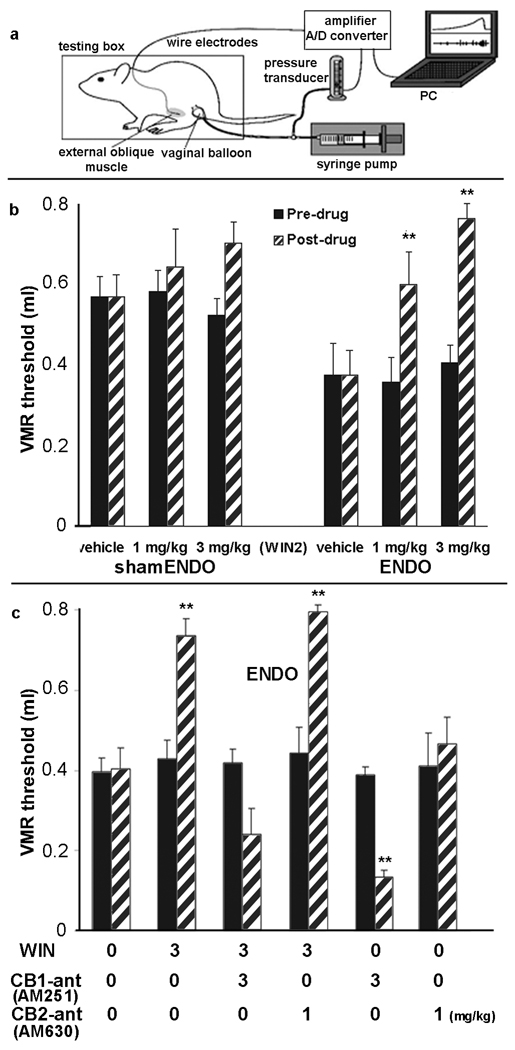Figure 3.
Effects of WIN2 (CB1/CB2 agonist), AM 251 (CB1 antagonist), AM 630 (CB2 antagonist) on the visceromotor reflex threshold (VMRth) to vaginal distention. The diagram in a shows the testing set-up. The graph in b compares the effect of 2 doses of WIN2 on the VMRth in shamENDO and ENDO rats. Comparing only the back bars shows that the pre-drug VMRth was significantly greater in shamENDO than in ENDO rats; P = 0.00025, unpaired Student’s t-test, which confirms earlier studies that ENDO produces referred muscle hyperalgesia [38]. In the shamENDO group, WIN2 had no significant affects; ANOVA (P = 0.353). In contrast, in the ENDO group, both doses of WIN2 increased the VMRth significantly. **P < 0.01 compared with pre-drug; ANOVA followed by post-hoc paired Student’s t-tests. Thus, WIN2 alleviates referred muscle hyperalgesia in the ENDO group. The graph in c illustrates, in ENDO rats, the effects of WIN2 when combined with antagonists AM 251 (CB1-antagonist; CB1 ant) and AM630 (CB2 antagonist; CB2-ant) and with the antagonists delivered alone. **P < 0.008 compared with pre-drug; ANOVA followed by post-hoc Student’s t-tests, with alpha set at 0.008 (Bonferroni correction). The CB1, but not the CB2 antagonist prevented the effect of WIN2, which indicates that WIN2 acts via the CB1 receptor. The CB1, not the CB2, antagonist alone significantly reduced the VMRth (increases nociception), indicating that endocannabinoids normally suppress endometriosis-induced hyperalgesia. Data shown as means and ± s.e.m.

